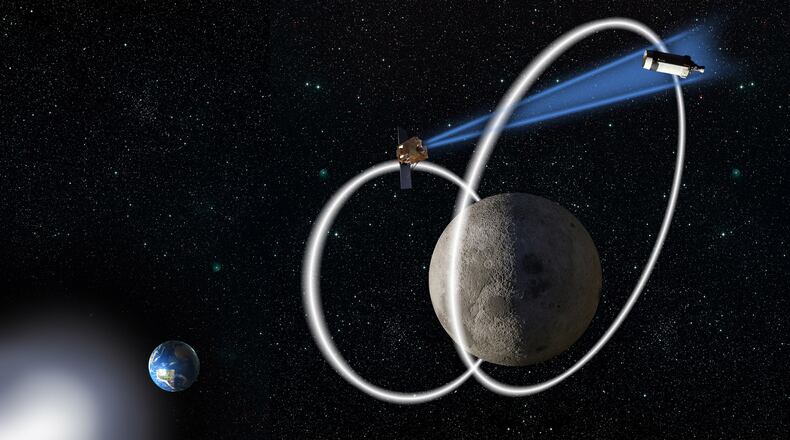AFRL’s Space Vehicles Directorate awarded the contract to support the lab’s Oracle spacecraft program, previously called the Cislunar Highway Patrol System, or CHPS.
The project has been renamed Oracle after the Oracle of Delphi in ancient Greece.
“Our primary goals for the program are to advance techniques to detect previously unknown objects through search and discovery, to detect small or distant objects, and to study spacecraft positioning and navigation in the XGEO realm,” said James Frith, Oracle principal investigator.
The spacecraft is expected to launch in late 2025 and will conduct two years of on-orbit experiments.
AFRL often uses the term “XGEO” to refer to the space beyond geosynchronous orbit out to the Moon, 10 times further than the traditional operational regime for U.S. Space Force and U.S. Space Command.
The Oracle spacecraft will operate about 200,000 miles from Earth, AFRL said.
Compare that distance to the current Space Surveillance Network, which has sensors on Earth or in traditional orbits, tracking satellites within distances of 36,000 kilometers, or 22,369 miles.
Oracle is the culmination of years of research at AFRL into how to detect and track objects in that area, given the vast distances, challenges of lunar and solar exclusion, and complexity introduced by the moon’s gravity, Frith said.
“We have a great deal to learn when it comes to operating, navigating and communicating from cislunar space and the more distant XGEO region,” said Col. Jeremy Raley, director of AFRL’s Space Vehicles Directorate. “We look forward to working with Advanced Space LLC, as we deliver novel space capabilities, thereby providing a safe and sustainable cislunar environment.”
About the Author

